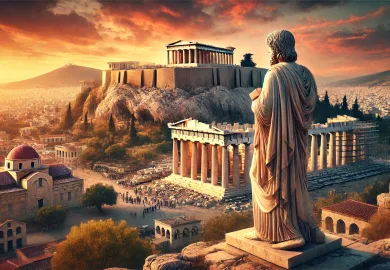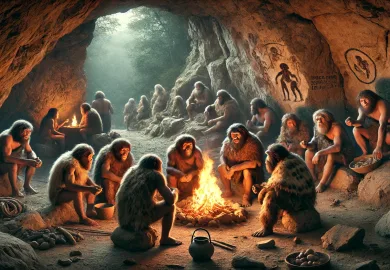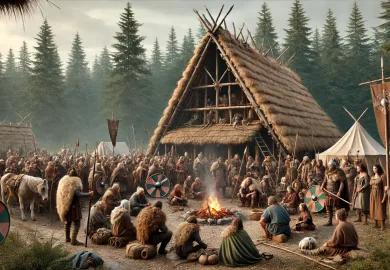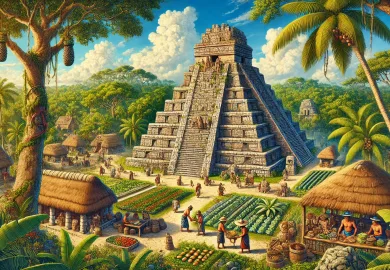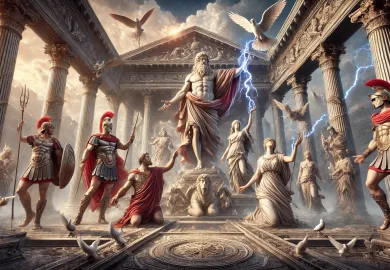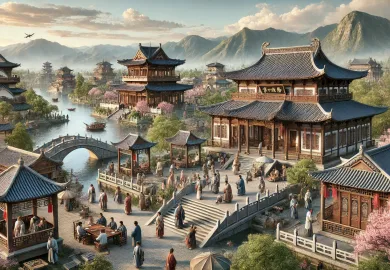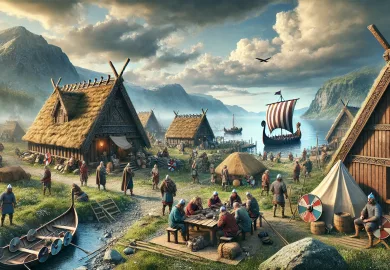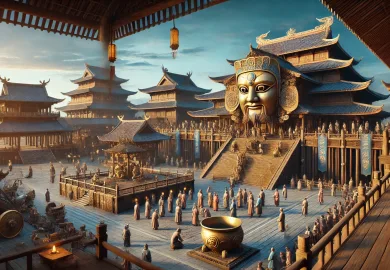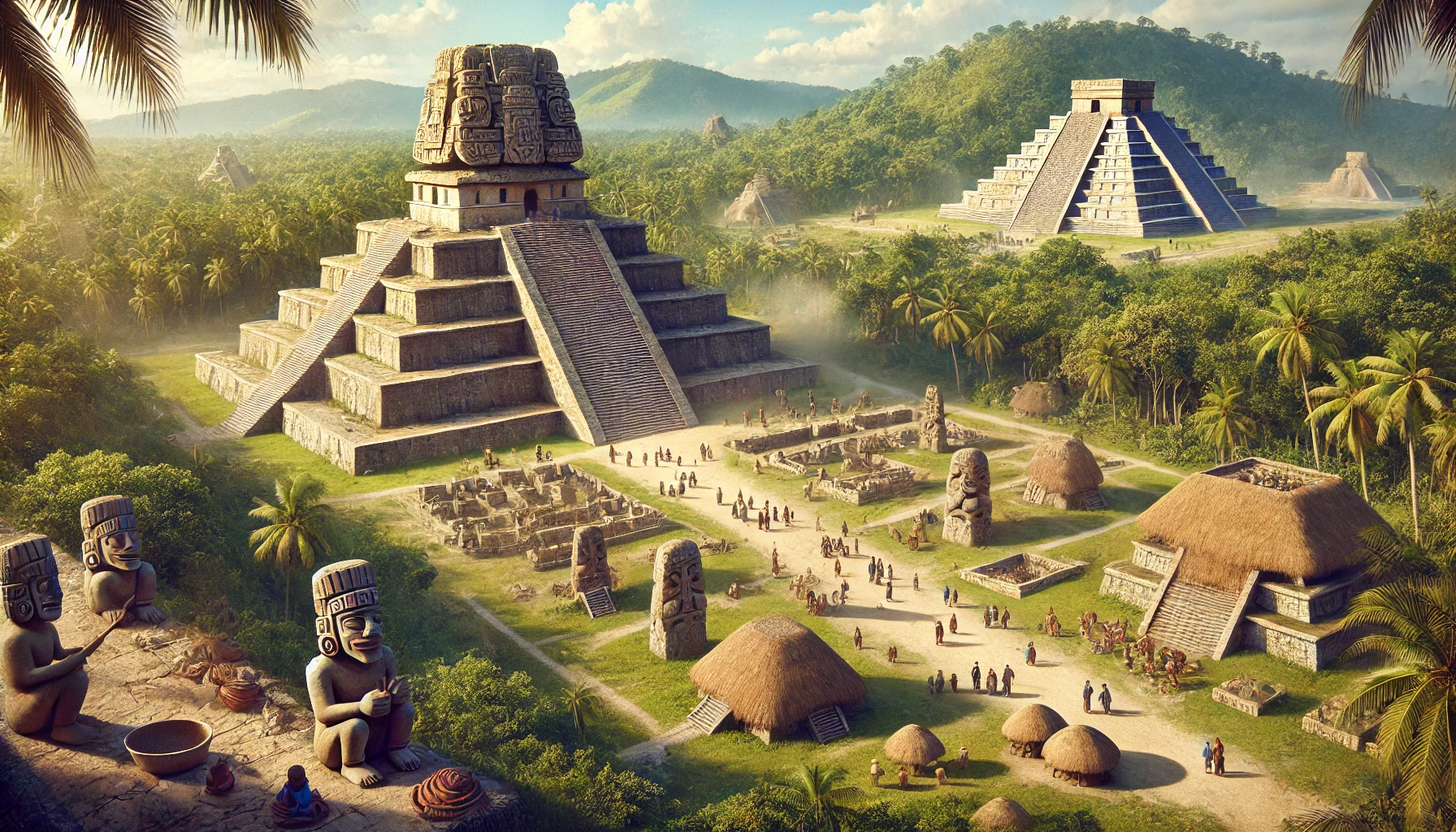
The ancient Olmec civilization, often referred to as the “mother culture” of Mesoamerica, stands as one of the most intriguing and mysterious ancient societies. Thriving between 1200 BCE and 400 BCE, this culture left an indelible mark on the region, influencing many later civilizations such as the Maya and the Aztec. Although much of their history remains shrouded in mystery, archaeologists and historians have unearthed significant insights into their way of life, art, religion, and social structure. This article delves deep into the captivating culture of the Olmecs, highlighting their profound contributions and their enigmatic existence.
Origins and Geographical Spread of the Olmec Civilization
The Olmecs emerged along the Gulf Coast of modern-day Mexico, primarily in the states of Veracruz and Tabasco. This region, characterized by its tropical climate, fertile land, and access to abundant natural resources, was perfect for sustaining a thriving culture. Archaeological evidence suggests that the Olmec civilization began to develop around 1500 BCE, with their first major city being San Lorenzo.
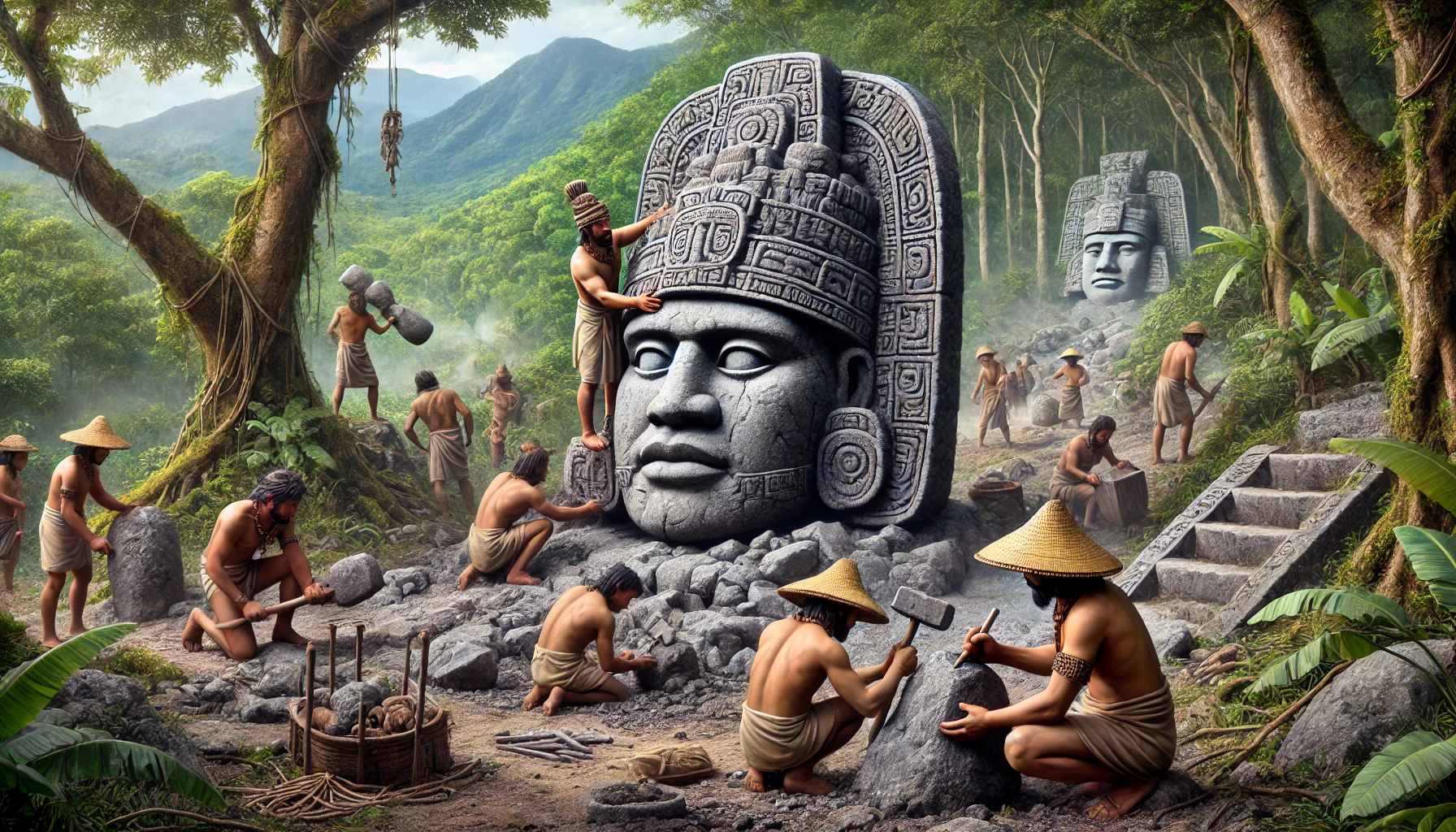
San Lorenzo served as an important urban center for the Olmecs, boasting complex urban planning, including drainage systems and monumental architecture. However, it wasn’t their only city; La Venta, another significant Olmec city, rose to prominence after the decline of San Lorenzo around 900 BCE. La Venta became the epicenter of their cultural and political life, and it was here that some of the most iconic Olmec artifacts were found, including the famous colossal heads.
The Olmecs’ influence extended far beyond their core region. Through trade and cultural exchange, Olmec ideas, art, and religious practices spread throughout Mesoamerica, influencing other cultures and leaving a lasting legacy that would shape the region for centuries to come.
Olmec Art: Colossal Heads and Beyond
One of the most iconic elements of Olmec culture is their remarkable art, particularly the colossal stone heads. These massive sculptures, some of which weigh up to 20 tons and stand over 9 feet tall, are believed to depict the rulers or important figures of the Olmec society. What makes these heads so extraordinary is the attention to detail and the skill required to carve them from basalt, a volcanic rock. The heads are often adorned with elaborate headdresses, further suggesting that they represent individuals of great importance.
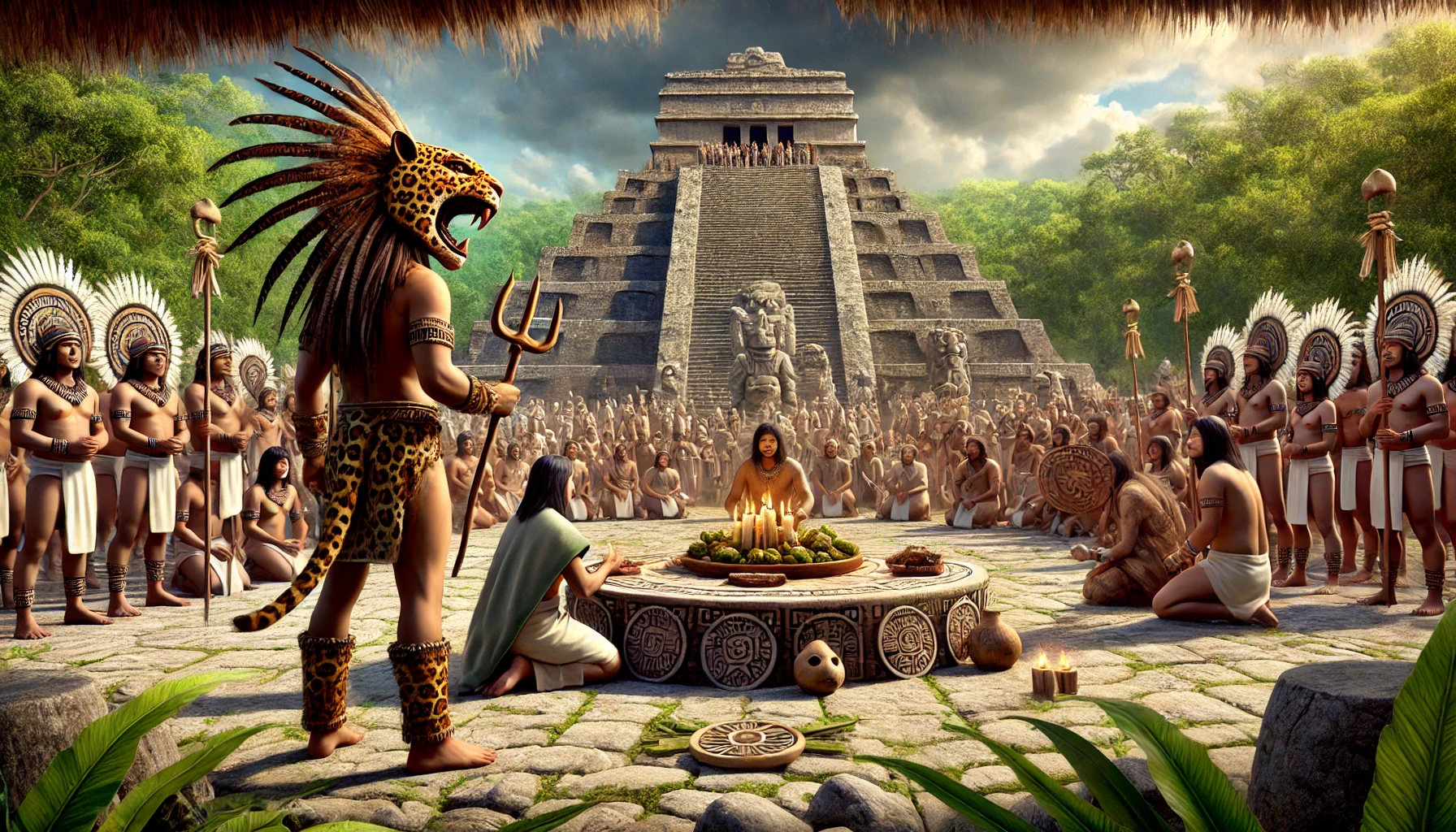
The process of creating these colossal heads was no small feat. The basalt used for these sculptures had to be transported over long distances, likely from the Tuxtla Mountains, requiring immense manpower and organization. This not only demonstrates the Olmec’s advanced engineering capabilities but also their social structure, which could mobilize such large labor forces for monumental projects.
However, the Olmecs were not limited to just colossal heads. They produced a wide variety of art, including jade figurines, intricate stone carvings, and pottery. Their art often depicted supernatural beings, animals, and human-animal hybrids, which suggests that much of their artwork had religious or symbolic significance. The Olmecs were also pioneers in Mesoamerican sculpture, setting the stage for the art styles that would later flourish in the Maya and Aztec civilizations.
Religion and Mythology: A Complex Pantheon
Religion played a central role in the lives of the Olmecs. While much about their religious beliefs remains speculative due to the lack of written records, their artwork and archaeological remains provide valuable insights into their spiritual world. The Olmecs believed in a pantheon of deities, many of which were associated with natural elements such as the earth, water, and sky. The most well-known Olmec deity is the jaguar, which was revered as a symbol of power and fertility.
The jaguar was central to Olmec mythology, and it is often depicted in their art, sometimes in human-animal hybrid forms. This suggests that the Olmecs may have believed in the ability of humans to transform into jaguars, possibly as part of religious rituals or shamanistic practices. The concept of the “were-jaguar” is one of the most enduring symbols of Olmec religion, and it has been found in numerous sculptures, pottery, and carvings.
In addition to the jaguar, the Olmecs worshipped other deities that were linked to agriculture, fertility, and water. The Olmecs lived in a region prone to heavy rainfall and flooding, so it is likely that they held water gods in high esteem. Their religious ceremonies probably included offerings to these deities, and it is believed that the Olmecs engaged in rituals such as bloodletting and human sacrifice to appease the gods and ensure bountiful harvests.
The religious practices of the Olmecs influenced later Mesoamerican civilizations. Elements of their pantheon, such as the rain god and the feathered serpent, were adopted by cultures like the Maya and Aztecs. The Olmecs’ religious legacy thus extended far beyond their own civilization, shaping the spiritual landscape of Mesoamerica for centuries.
Social Structure and Political Organization
The Olmec civilization was highly stratified, with a clear division between the elite class and the common people. The colossal heads, which likely depict rulers, are a testament to the importance of leadership in Olmec society. These rulers were not only political leaders but also religious figures, serving as intermediaries between the gods and the people.
The elite class lived in urban centers like San Lorenzo and La Venta, where they controlled the production of luxury goods, trade, and religious ceremonies. They also oversaw large-scale construction projects, such as the building of ceremonial centers, pyramids, and monuments. The power of the ruling class was further reinforced through religion, as they claimed to have divine connections to the gods.
Beneath the elite class was a large population of commoners who lived in small villages surrounding the urban centers. These individuals were primarily engaged in agriculture, producing maize, beans, squash, and other crops that sustained the Olmec economy. They also provided the labor force for the construction of monuments and other public works.
The Olmecs were also skilled traders, and their extensive trade networks allowed them to acquire valuable materials such as jade, obsidian, and basalt, which were not available in their immediate region. This trade not only helped to build the wealth of the ruling class but also facilitated the spread of Olmec culture throughout Mesoamerica.
The Mysterious Decline of the Olmecs
Despite their impressive achievements, the Olmec civilization began to decline around 400 BCE. The reasons for their decline are still a subject of debate among scholars, but several theories have been proposed. One theory suggests that environmental changes, such as flooding or drought, may have disrupted the agricultural systems that supported their cities. The tropical climate of the region, while conducive to agriculture, was also prone to natural disasters that could have devastated crops and infrastructure.
Another theory is that internal conflicts, such as power struggles or social unrest, may have weakened the political structure of the Olmec society. As the ruling class lost its grip on power, the urban centers may have been abandoned, and the population dispersed into smaller, more isolated communities.
A third possibility is that external pressures from neighboring cultures played a role in the Olmec decline. As other civilizations in Mesoamerica began to rise, they may have encroached on Olmec territory, leading to warfare or competition for resources.
Whatever the cause, by 400 BCE, the Olmec cities of San Lorenzo and La Venta were largely abandoned, and the civilization faded from prominence. However, their cultural and religious legacy lived on in the civilizations that followed, particularly the Maya and the Aztecs, who adopted many aspects of Olmec religion, art, and social organization.
Legacy of the Olmec Civilization
Although the Olmec civilization disappeared over two millennia ago, its impact on Mesoamerican history is undeniable. The Olmecs are credited with developing many of the cultural and technological innovations that would shape the region for centuries. One of their most important contributions is the Mesoamerican ballgame, a ritual sport that was played by many later civilizations, including the Maya and the Aztecs.
The Olmecs were also pioneers in the use of writing and a numerical system. Although their writing system has not been fully deciphered, it is one of the earliest known in Mesoamerica, and it likely influenced the development of later scripts used by the Maya. Additionally, the Olmecs developed a calendar system that may have been the precursor to the famous Maya Long Count calendar.
The Olmec legacy is also evident in the religious and artistic traditions of later Mesoamerican cultures. The deities, symbols, and motifs that were central to Olmec religion, such as the jaguar, the feathered serpent, and the rain god, were adopted by the Maya, Aztecs, and other cultures. The monumental architecture and urban planning of the Olmec cities also served as models for later civilizations.
In many ways, the Olmecs laid the foundation for the complex societies that would emerge in Mesoamerica after their decline. Their innovations in art, religion, and politics set the stage for the rise of great civilizations like the Maya and the Aztecs, ensuring that their cultural legacy would endure long after their cities had been abandoned.
Conclusion: Unraveling the Mysteries of the Olmecs
The ancient Olmecs remain one of the most fascinating and mysterious cultures of Mesoamerica. Their monumental art, complex religion, and advanced social organization reveal a society that was both sophisticated and deeply spiritual. While much about the Olmecs remains unknown, the discoveries made by archaeologists over the past century have shed new light on their culture and their lasting influence on Mesoamerican history.
As we continue to uncover more about the Olmecs, it becomes increasingly clear that they played a pivotal role in shaping the cultural and religious landscape of the region. From their colossal heads to their enigmatic pantheon of gods, the Olmecs have left an indelible mark on history—one that continues to captivate scholars and enthusiasts alike.

